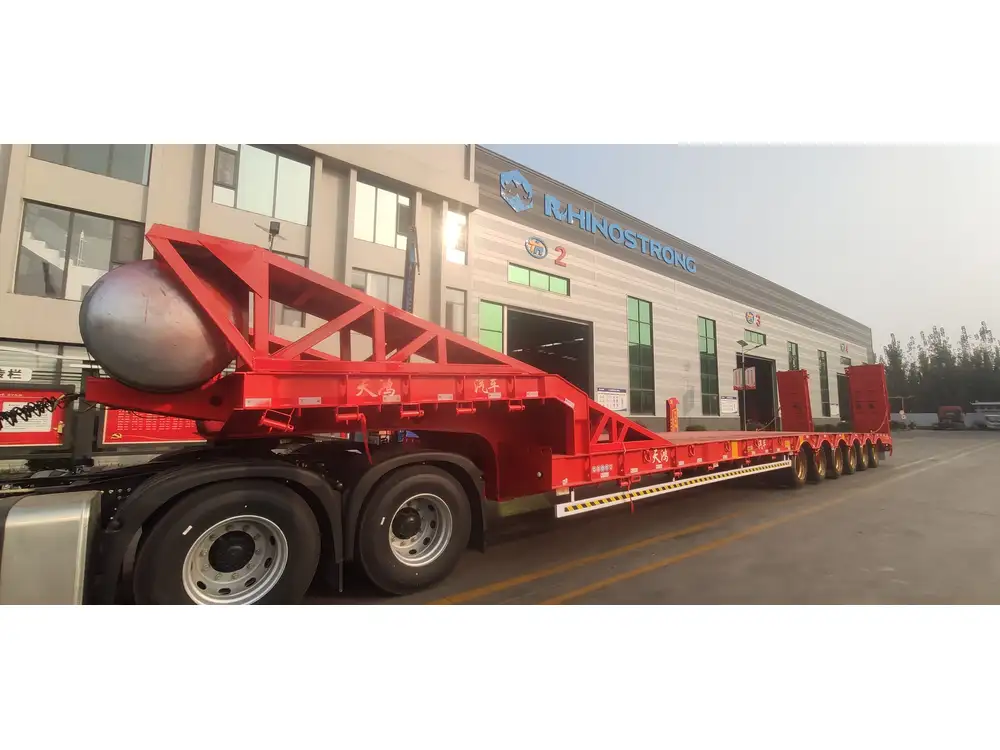Managing heavy materials effectively relies heavily on the proper unloading of a dump trailer. Understanding the intricacies of this process will not only save time but also enhance safety, ensuring that both the operator and the environment remain secure. In this guide, we explore the systematic approach to unloading a dump trailer, highlighting key techniques, safety protocols, common mistakes, and maintenance tips to optimize long-term functionality.
Understanding Dump Trailers: Types and Their Uses
Before diving into how to unload a dump trailer, it is crucial to grasp the various types available in the market. Each type serves specific purposes, impacting how you approach unloading.
| Type of Dump Trailer | Description | Common Uses |
|---|---|---|
| Standard Dump Trailer | Most common type, typically with a basic design for residential or small jobs. | Landscaping, construction debris. |
| Heavy-Duty Dump Trailer | Built for robust tasks and capable of supporting heavier loads. | Demolition, excavation. |
| End Dump Trailer | The bed hinges at the back, allowing dumping at a steep angle. | Gravel, sand, and loose materials. |
| Side Dump Trailer | Unloads materials on either side, providing versatility. | Rock selling and bulk dumping. |
| Bottom Dump Trailer | Unloads materials from the bottom, often used for aggregates. | Road construction, aggregates. |
Understanding which type of dump trailer you are dealing with is paramount for a smooth unloading process.
Preparing for the Unloading Process

Step 1: Assess Your Surroundings
Before beginning the unloading process, conduct a thorough inspection of the unloading area. Look for:
- Ground Stability: Ensure soil or surface can support the weight of the trailer during unloading.
- Obstructions: Identify any overhead wires, trees, or structures that could pose hazards.
- Traffic Control: Designate an area to keep pedestrians and vehicles at a safe distance.
Step 2: Safety Gear and Equipment
Equipping yourself with the right safety gear is non-negotiable. Essential items include:
- Hard hats
- High-visibility vests
- Steel-toe boots
- Heavy-duty gloves
- Safety goggles
Step 3: Trailer Setup
Once the area is assessed, correctly position your dump trailer:
- Level Ground: Place the trailer on firm, level ground for stability.
- Parking Brakes: Engage the parking brakes to prevent any unintended movement.
- Disconnecting from Vehicle: If it’s detached, ensure the trailer’s wheels are chocked to maintain stability.

How to Unload a Dump Trailer Effectively
With all preparatory steps in place, it’s time to delve into the unloading process.
Step 4: Starting the Unloading Process
- Check the Hydraulic System: Ensure that the hydraulic system is functioning properly. Inspect hoses for leaks or damage.
- Position the Tow Vehicle: If you are using a tow vehicle, position it at a safe distance from the trailer, preventing any potential hazard from falling materials.
Step 5: Operating the Dump Mechanism
- Manual vs. Electric: Depending on your trailer’s mechanism, either manually lift the trailer’s bed or activate the electric/hydraulic unloading function.
- Control Speed: Always control the speed at which the bed rises. A slow, gradual lift reduces the risk of tipping or spilling.
- Position Yourself Safely: Stand clear of the trailer, ensuring nothing obstructs the unloading path.

Step 6: Adjusting the Unloading Angle
- Adjusting the Bed: Utilize the control mechanism to adjust the bed’s angle. Increasing the angle will facilitate easier material discharge.
- Watch Material Flow: Observe how the material flows out; if it seems stuck, slightly lowering the bed can help shake it loose.
Step 7: Completing the Unloading
Once the materials are discharged:
- Lower the Bed: Gradually lower the trailer bed back down to the resting position.
- Re-engage the Safety Mechanisms: Ensure that hydraulic release valves are reset and the system is turned off.
Step 8: Final Inspection
Post-unloading, inspect the area for remaining debris and ensure nothing has been spilled. Clean any materials that may pose safety hazards.

Common Mistakes to Avoid During Unloading
As with any process, unloading a dump trailer can lead to errors if not done with diligence. Here are a few pitfalls to avoid:
- Neglecting Safety Checks: Failing to inspect the unloading area or trailer can lead to accidents.
- Ignoring Trailer Stability: A lack of proper chocking can result in runaway trailers.
- Raising the Bed Too Quickly: Sudden movements can destabilize the trailer and cause material spills.
Maintenance Tips for Your Dump Trailer
To ensure longevity and optimal performance of your dump trailer, regular maintenance is essential.
Frequent Maintenance Checklist
| Task | Frequency |
|---|---|
| Inspect hydraulic fluid | Monthly |
| Check for leaks | Before and after each use |
| Clean the trailer bed | After every unloading |
| Examine tires and brakes | Monthly |
| Lubricate moving parts | Quarterly |

Addressing Common Issues
- Hydraulic Failure: This can often be resolved by checking the fluid level and ensuring there are no leaks.
- Electrical Problems: Regularly inspect battery connections and wiring for signs of corrosion or wear.
The Final Word: Mastering Dump Trailer Unloading
By mastering the unloading of dump trailers, operators not only enhance efficiency but also uphold safety standards that protect them and those around them. This guide, detailing both the procedure and the accompanying precautions, aims to elevate your competence and confidence in handling dump trailers.
In conclusion, regularly revisiting these steps and maintaining your trailer will lead to productive, safe unloading practices. Whether engaged in construction, landscaping, or waste management, effective unload protocols are integral to operational success. With these insights, we encourage you to adjust your unloading techniques as necessary, keeping professional best practices in mind at all times.
Arming yourself with knowledge and taking the necessary precautions creates a safer, more efficient working environment, ultimately leading to higher productivity and a reputation for excellence in the manufacturing and handling of semi-trailers.



